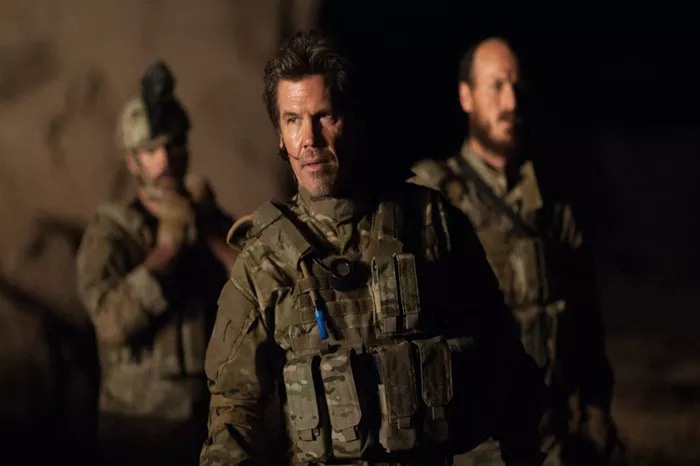Sicario is a gripping crime thriller that has captivated audiences and critics alike since its release. Directed by Denis Villeneuve and written by Taylor Sheridan, the film stands out in the genre for its intense portrayal of the drug war, compelling characters, and masterful cinematography. Released in 2015, Sicario quickly garnered praise for its realistic depiction of the complexities involved in law enforcement and drug trafficking. This article explores the various elements that contribute to Sicario’s acclaim, including its narrative structure, character development, direction, and technical execution.
The Narrative Structure
Unconventional Storytelling
Sicario distinguishes itself through its unconventional storytelling. Unlike traditional crime dramas, the film avoids a straightforward narrative. Instead, it delves into the moral ambiguities of the drug war, focusing on the personal and professional dilemmas of its characters. The story unfolds through a series of intense and suspenseful scenes that gradually reveal the complexity of the situation. This approach keeps the audience engaged and constantly questioning the ethics of the actions portrayed on screen.
The Moral Dilemma
At the heart of Sicario is a moral dilemma that challenges viewers’ perceptions of right and wrong. The film does not present a clear hero or villain but instead explores the gray areas of law enforcement and justice. The character of Kate Macer, played by Emily Blunt, serves as a lens through which the audience experiences the ethical conflicts and brutal realities of the drug war. Her journey reflects the broader theme of moral ambiguity, making the film’s narrative both thought-provoking and engaging.
Character Development
Kate Macer: A Relatable Protagonist
Emily Blunt’s portrayal of Kate Macer is central to Sicario’s success. As an FBI agent, Kate begins with a strong sense of justice and duty. Her character arc is compelling as she grapples with the harsh realities of the drug war and the moral compromises it entails. Blunt’s performance adds depth to Kate, making her a relatable and sympathetic figure. The audience’s investment in her character enhances the film’s emotional impact and raises the stakes of the story.
Alejandro Gillick: The Enigmatic Operative
Benicio del Toro’s portrayal of Alejandro Gillick adds another layer of complexity to the film. Alejandro is a mysterious operative with a personal vendetta against drug cartels. His motivations and methods are ambiguous, creating a sense of intrigue and unpredictability. Del Toro’s nuanced performance ensures that Alejandro is both formidable and enigmatic, challenging the audience’s assumptions about justice and revenge.
Matt Graver: The Morally Ambiguous Agent
Josh Brolin’s character, Matt Graver, embodies the morally ambiguous nature of the drug war. As a member of a covert government task force, Matt operates in the shadows, often resorting to questionable tactics to achieve his goals. Brolin’s portrayal of Matt adds depth to the film’s exploration of ethical ambiguity, highlighting the blurred lines between right and wrong in the context of national security.
See also: Will There Be Another Sicario Movie?
Direction and Cinematography
Denis Villeneuve’s Direction
Denis Villeneuve’s direction is a key factor in Sicario’s success. Known for his meticulous attention to detail and ability to create tension, Villeneuve crafts a film that is both visually stunning and emotionally intense. His direction ensures that each scene contributes to the overall atmosphere of unease and suspense. Villeneuve’s ability to balance action with character-driven moments allows Sicario to maintain its impact throughout.
Roger Deakins’ Cinematography
Roger Deakins’ cinematography is another standout aspect of Sicario. Deakins, a celebrated cinematographer, captures the film’s gritty and immersive atmosphere with his expert use of light and shadow. His work on Sicario includes striking visuals that enhance the film’s tension and realism. From the hauntingly beautiful shots of the desert to the claustrophobic scenes in urban settings, Deakins’ cinematography contributes significantly to the film’s overall impact.
Realism and Authenticity
Accurate Portrayal of the Drug War
Sicario is praised for its realistic portrayal of the drug war. The film avoids sensationalism and instead focuses on the harsh realities of the conflict. The depiction of cartel violence, law enforcement operations, and political corruption is grounded in authenticity, providing viewers with a stark and unflinching look at the issues. This commitment to realism enhances the film’s credibility and impact.
Attention to Detail
The film’s attention to detail further contributes to its authenticity. From the accurate depiction of law enforcement procedures to the realistic portrayal of cartel operations, Sicario demonstrates a thorough understanding of the subject matter. This meticulous approach helps to create a believable and immersive experience for the audience.
The Soundtrack and Score
Jóhann Jóhannsson’s Score
Jóhann Jóhannsson’s score plays a crucial role in Sicario’s atmosphere. His haunting and minimalist compositions underscore the film’s tension and emotional depth. The score complements the visuals and narrative, enhancing the overall experience. Jóhannsson’s music adds a layer of intensity to the film, making key scenes even more impactful.
Use of Sound Design
In addition to the score, Sicario employs effective sound design to heighten its tension. The use of sound in key scenes, such as the border crossing sequence, amplifies the sense of danger and urgency. The combination of music and sound design creates a compelling auditory experience that supports the film’s visual and narrative elements.
Conclusion
Sicario is a standout film in the crime thriller genre due to its innovative storytelling, complex characters, and exceptional technical execution. The film’s exploration of moral ambiguity, coupled with its realistic portrayal of the drug war, offers a thought-provoking and engaging experience. Denis Villeneuve’s direction, Roger Deakins’ cinematography, and Jóhann Jóhannsson’s score contribute to the film’s success, creating a powerful and immersive cinematic experience. Sicario remains a compelling example of how a well-crafted film can captivate audiences and provoke meaningful reflection.
Related topic:
Will There Be a New Titanic Movie? [Revealed]
Will There Be a King Kong vs. Godzilla Movie 2?

